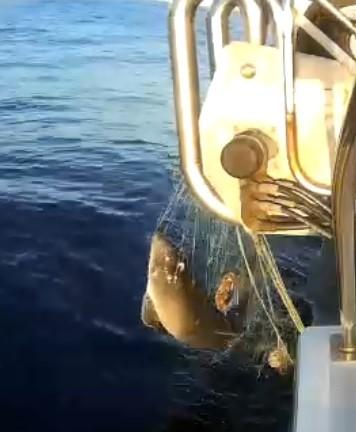Background & Aims
Background

Incidental bycatch in gillnets is a substantial threat to harbour porpoises (Phocoena phocoena) and other small cetaceans. It is estimated that bycatch related mortality of cetaceans exceeds hundreds of thousands yearly globally. Especially threatened is the critically endangered Baltic Sea harbour porpoise population, consisting of around 500 mature individuals.The countries around the Baltic Sea have entered the ASCOBANS agreement which includes a special management plan for the Baltic Sea, the so called Jastarnia plan. In this plan several protective provisions are listed, among which bycatch mitigation is stated as the most important and urgent. EU has also instituted a regulation to reduce the incidental bycatch of small cetaceans in all European waters (EU Regulation 812/2004). This regulation states that Acoustic Deterrent Devices, so called “pingers”, must be used on gillnets with specified mesh size.
The use of pingers to reduce bycatch of harbour porpoises have been successful. However, due to cost, practical issues and lack of surveillance, pingers have only been used to a limited degree in gillnet fisheries within the EU. Moreover, there is a concern that seals may use pingers as so called “dinner bells”, making it easier for them to find the nets to raid them for fish and often destroying the nets in the process. This makes fishermen reluctant to use pingers, especially so in the Baltic Sea where seal depredation is already a severe issue.
Aims
In the present study, the efficiency of two acclaimed “seal safe” pingers, an adjusted Banana pinger (abbreviated as SSB) and the Future oceans F70 pinger (abbreviated as FO), in lowering bycatch and deterring harbour porpoises from the vicinity of commercial fish gillnets was tested. Data collection was done in collaboration with local professional fishermen in the Sound and further north on the Swedish west coast. It was also tested if video footage from attached cameras on fishing vessels could be an efficient tool in verifying catch logbooks handed to participating fishermen during the data collection. It was predicted that using pingers on gillnets would reduce the number of bycaught porpoises compared to gillnets without pingers.
Responsible for this page:
Director of undergraduate studies Biology
Last updated:
05/28/20
